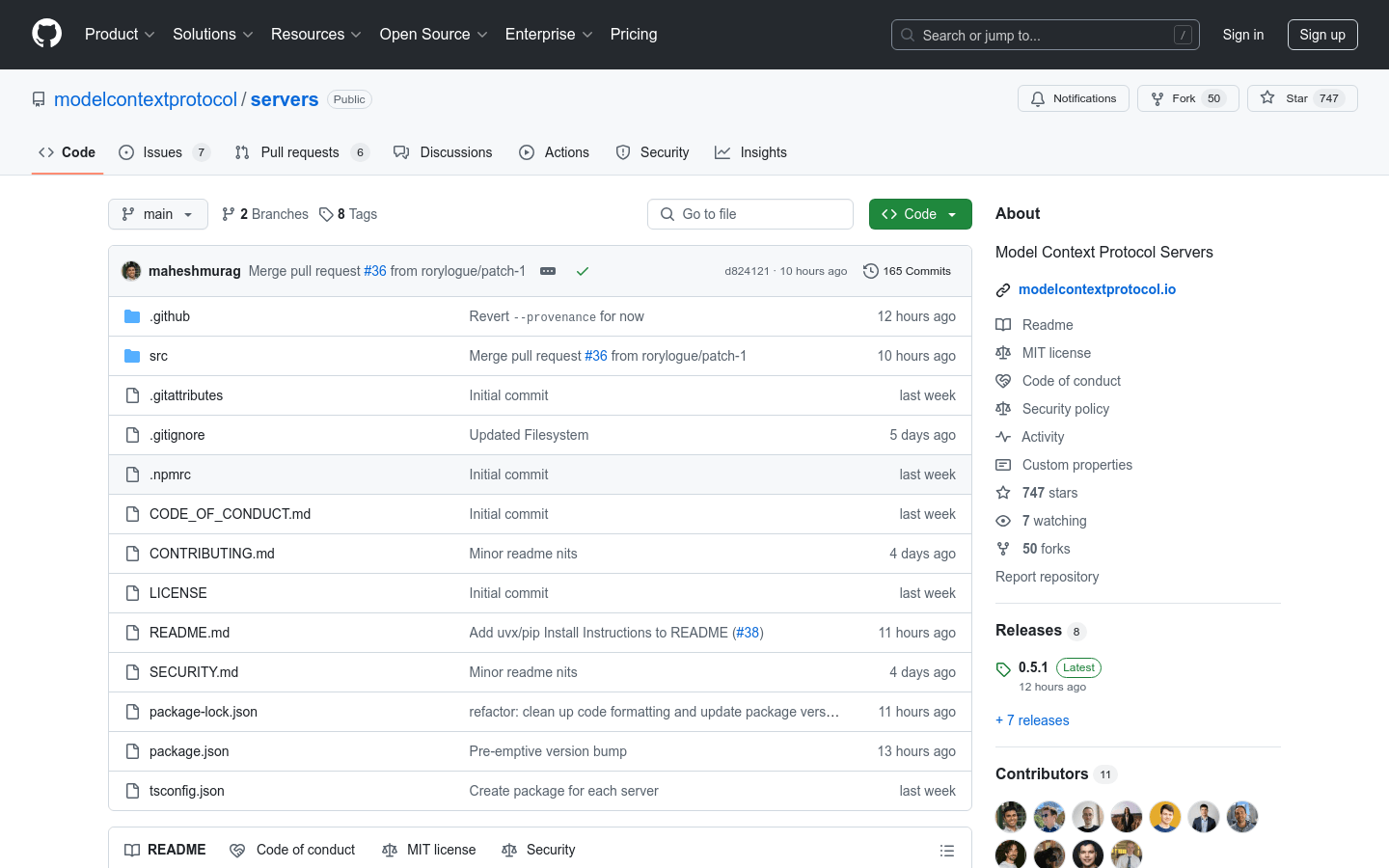

Model Context Protocol Servers
Overview :
Model Context Protocol Servers is a project that showcases the versatility and scalability of the Model Context Protocol (MCP). It provides a set of reference implementations and community-contributed servers that demonstrate how to use MCP to provide secure, controlled access to tools and data sources for large language models (LLMs). Each MCP server is implemented using the TypeScript MCP SDK or Python MCP SDK. Managed by Anthropic and built with the community, this project is open source and encourages contributions of servers and improvements.
Target Users :
The target audience includes developers and data scientists who need to securely and efficiently integrate various tools and data sources for large language models. MCP servers provide a standardized way to achieve this goal, enabling developers to easily extend and customize the capabilities of the models.
Use Cases
Use the Filesystem server for secure file operations.
Manage code repositories and perform file operations through the GitHub server.
Utilize the PostgreSQL server for read-only database access and schema validation.
Features
- Filesystem: Secure file operations with configurable access control.
- GitHub: Repository management, file operations, and GitHub API integration.
- Google Drive: File access and search functionality for Google Drive.
- PostgreSQL: Read-only database access with schema validation support.
- Slack: Channel management and messaging capabilities.
- Memory: A persistent memory system based on knowledge graphs.
- Puppeteer: Browser automation and web scraping.
- Brave Search: Web and local search using Brave's search API.
- Google Maps: Location services, directions, and place details.
- Fetch: Network content retrieval and transformation to enhance LLM efficiency.
How to Use
1. Visit the GitHub page for Model Context Protocol Servers.
2. Select the appropriate server implementation based on the required features.
3. Follow the installation and configuration instructions provided in the README for the required MCP server.
4. Use the `npx` command to start the TypeScript server; for Python servers, install and start using `uvx` or `pip`.
5. Configure the MCP client to utilize these servers, such as setting up the servers in Claude Desktop.
6. Depending on the specific use case, you may need to set environment variables or provide additional parameters.
7. Start the server and test its functionality to ensure correct integration.
Featured AI Tools
Chinese Picks

Douyin Jicuo
Jicuo Workspace is an all-in-one intelligent creative production and management platform. It integrates various creative tools like video, text, and live streaming creation. Through the power of AI, it can significantly increase creative efficiency. Key features and advantages include:
1. **Video Creation:** Built-in AI video creation tools support intelligent scripting, digital human characters, and one-click video generation, allowing for the rapid creation of high-quality video content.
2. **Text Creation:** Provides intelligent text and product image generation tools, enabling the quick production of WeChat articles, product details, and other text-based content.
3. **Live Streaming Creation:** Supports AI-powered live streaming backgrounds and scripts, making it easy to create live streaming content for platforms like Douyin and Kuaishou. Jicuo is positioned as a creative assistant for newcomers and creative professionals, providing comprehensive creative production services at a reasonable price.
AI design tools
105.1M
English Picks

Pika
Pika is a video production platform where users can upload their creative ideas, and Pika will automatically generate corresponding videos. Its main features include: support for various creative idea inputs (text, sketches, audio), professional video effects, and a simple and user-friendly interface. The platform operates on a free trial model, targeting creatives and video enthusiasts.
Video Production
17.6M
















